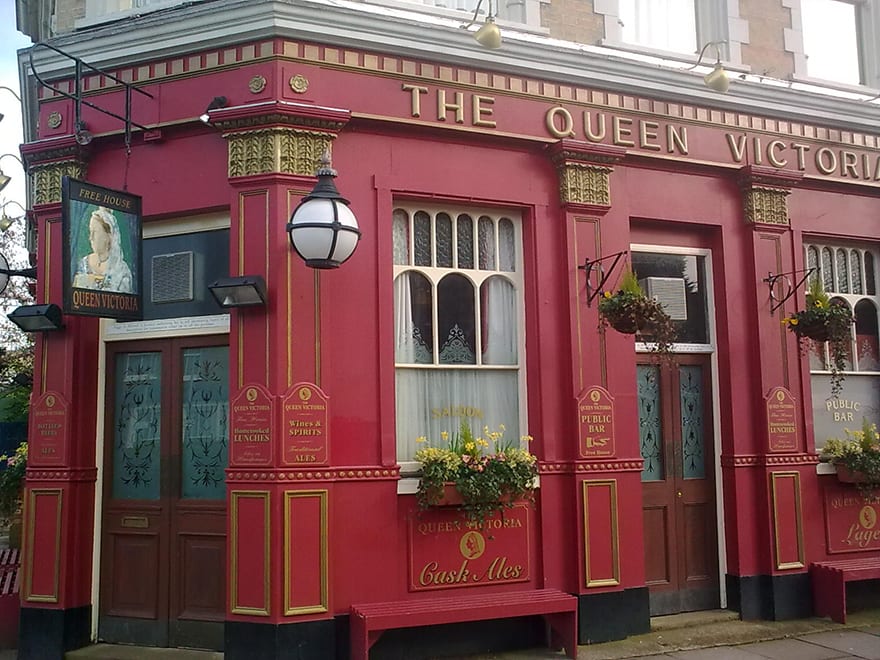Lee Mullin, construction technical specialist at Autodesk, explains how technology familiar to many construction managers is maintaining the accuracy of TV and blockbuster film sets.
Earlier this month we learned that one our beloved soaps, EastEnders, has announced that it is looking for a contractor to rebuild its 30-year old Albert Square set to bring it into the 21st century.
The big challenge will be making sure the new set is not only long-lasting enough to reach and go beyond the soap’s 50th anniversary in 2035, but that it also remains true to the original design. In an industry where cameras now pick up the smallest mistakes, the makers will need to ensure they capture and maintain the details that millions of viewers know so well.
Modern techniques of capturing reality through laser scanning and 3D printing are already used across the sets of other TV programmes and even films to help with maintaining continuity, as well as providing digital sets for special effects companies. And the makers of EastEnders can harness these too.
Laser scanning technology (or LiDAR) is increasingly being used to maintain the consistency of TV and films sets by checking the uniformity of lighting and colour levels between takes.
Alexis Hagg from Lexhag Ltd, which provides services to the entertainment industry, describes laser scanning as “an invaluable technology” and says: “LiDAR is the sure fire way to capture everything we need to know about a set, which will enable us to perform many post-effect processes. The data can also be shared across departments for pre-visualisation, measurement for set installation and recording completed set construction.”
Equally, 3D printing and other CAD systems are revolutionising how TV and film props and miniature scale models are made, notable examples being James Bond’s Aston Martin in Skyfall, Iron Man’s suit and the spaceship from Interstellar.
However, as 3D printing is increasing in scale (in China it’s being used to produce housing), it’s allowing set reconstruction to be quicker and easier. In a similar way to how architects and engineers are being asked to build constructible models and consider the real world impacts of their designs, visual artists are now looking much more at building digital models that will be used in the real world, meaning they need to simulate and check their designs before physical production begins.

Technology could help in the rebuild of EastEnders’ Albert Square
By using individual scanners to capture the structure of Albert Square, as well as scanners to capture additional props such as cars, backpacks or even hand-held devices, the makers of the BBC show could easily pick up every single detail of the set. From there, these 3D models could be converted into meshes, allowing them to be manufactured by subtractive manufacturing techniques, like CNC machines, or by the latest 3D printing technology. This would allow near identical reproduction of some of the more difficult plaster moulding around the entrance to the Queen Vic.
Adopting construction techniques such as modular building could also allow for easier replacement of buildings parts, perhaps for filming cutaways of buildings or simply just to help with set dressing after dramatic scenes such as fires.
Better accuracy leads to cost savings
Across the entertainment industry, techniques like these have helped make substantial cost savings when re-building or re-enacting key locations for filming, as opposed to travelling to expensive locations, purchasing permits and dealing with road and building closures.
Real world robotic cameras and computer generated visual effects can be combined to produce realistic footage, with this mix of physical and digital allowing industry professionals to take historical landmarks with tight restrictions and rebuild part of them in a warehouse at a movie studio.
There’s many precedents of using alternative locations to recreate period environments, for example the streets of Manchester used to recreate 1940s New York.
The use of laser scanners and 3D printing technology is also becoming more prevalent in the construction industry because of the relatively low-cost implications and ease of use of laser scanners. Within a few minutes, construction professionals can get a highly accurate 3D model that can be used as a reference for a design and has much more detail than a traditional survey.
From this 3D model, workers can source site measurements from the comfort of their office instead of visiting the site to take additional surveys; something which also helps mitigate health and safety concerns by reducing the number of people walking around on site. The laser scans also allow new designs to be tested against existing structures which not only helps to identify potential clash detections, but also means that new fabricated 3D parts should fit first time, reducing rework.
Technology is blurring the lines between the real world and the digital world. Whilst construction is generally seen as a way of building something to last, new technologies such as 3D printing and laser scanning could help bring the flexibility needed in the ever evolving world of TV and film, rebuilding iconic sets such as EastEnders to an accuracy even the most diehard viewers wouldn’t notice.
This article first appeared on BIM+’s sister site Construction Manager.
Adopting construction techniques such as modular building could also allow for easier replacement of buildings parts, perhaps for filming cutaways of buildings or simply just to help with set dressing after dramatic scenes such as fires.– Lee Mullin, Autodesk











